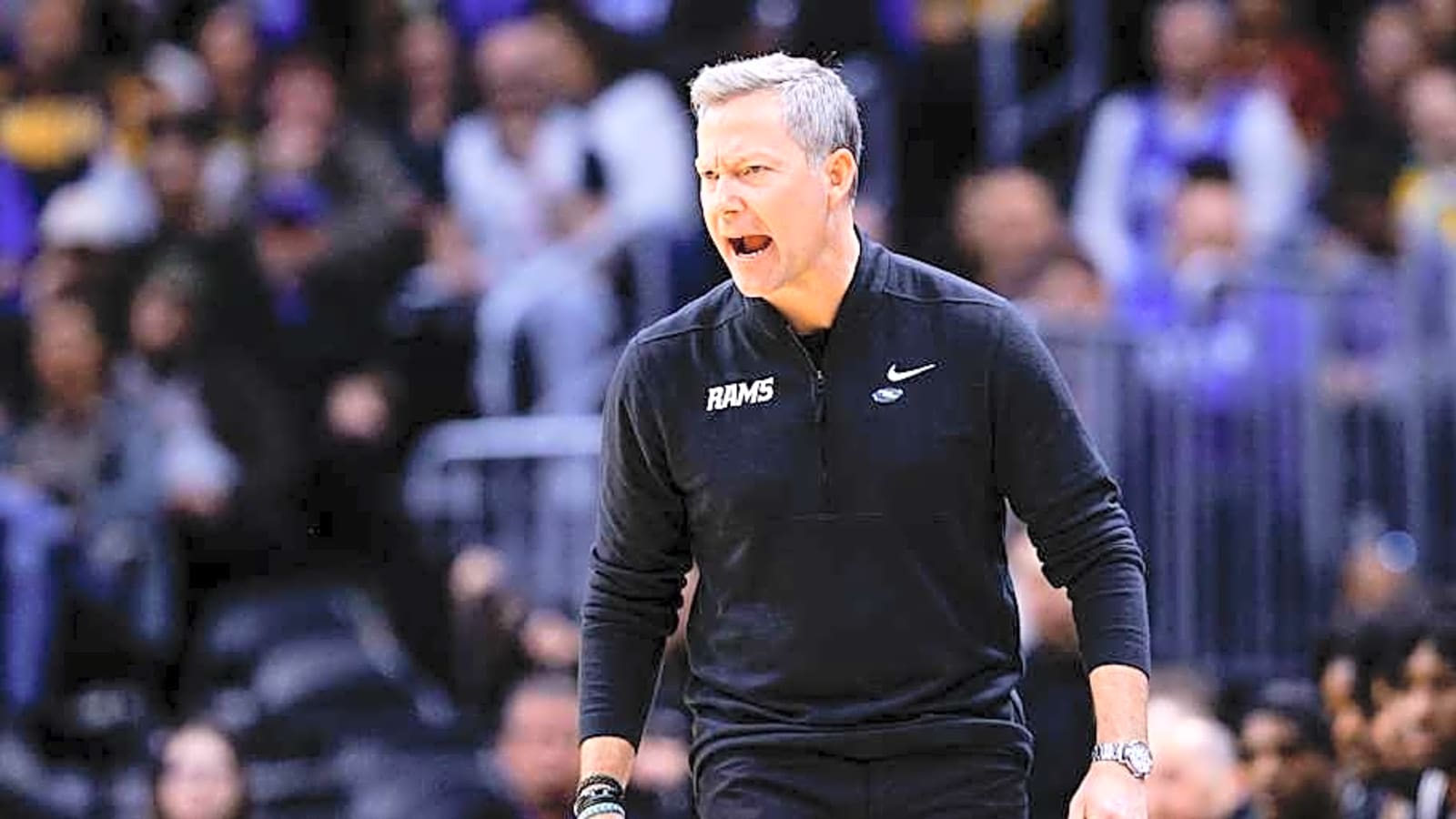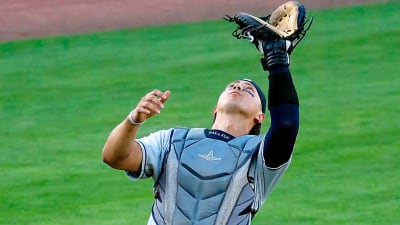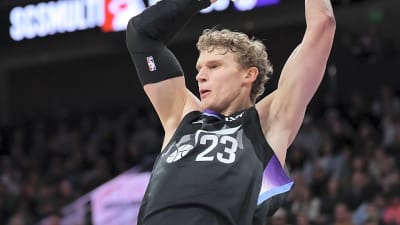
Duke is first in a series of “Five on Five,” in which we will compare Virginia men’s basketball’s presumed starting five with those of the ACC’s 17 other teams. The Cavaliers last defeated the Blue Devils in the winter of 2023, with Duke taking the last matchup, 80-62.
As a reminder, Virginia’s outlook is as such: point guard Dallin Hall, shooting guard Jacari White, wing Malik Thomas, power forward Thijs de Ridder, and center Johann Grunloh.
Point Guard: Dallin Hall (Gr.) vs. Caleb Foster (Jr.)
Hall’s 2024-25 at BYU: 10 GS, 24.6 MPG, 6.8 PPG, 4.2 APG, 40.2% FG, 35.3% 3PT
Foster’s 2024-25 at Duke: 7 GS, 14.0 MPG, 4.9 PPG, 1.4 APG, 41.7% FG, 34.2% 3PT
Summary: Neither Hall nor Foster are stars, yet they’ll be tasked with the control of two talented starting fives. They have followed similar trajectories and both found themselves relegated to smaller roles last season, primarily due to the excess of starpower on their respective teams, BYU and Duke. Hall still played valuable minutes for the Cougars in their Sweet Sixteen run in the NCAA Tournament; Foster, however, slipped behind a guard rotation featuring two NBA Draft selections and a five-star in the to-be-discussed Isaiah Evans.
Hall’s numbers trump those of Foster, and he has more big-game experience. Nonetheless, it’s difficult for me to avoid the nagging thought that no guard on Virginia’s current roster (perhaps outside of Malik Thomas) could have played 15-plus minutes per game on Duke’s team last season. Foster’s potential to break out of a relative shell keeps him tied with the veteran Hall in this first positional comparison. He’s not as much of a point guard as three-year starter Tyrese Proctor, so it will be interesting to monitor whether he can stave off a talented, four-star freshman — Cayden Boozer — as the season progresses. Hall will also be tested by a confident rookie in the form of hometown hero Chance Mallory.
Advantage: Even
Shooting Guard: Jacari White (Gr.) vs. Isaiah Evans (So.)
White’s 2024-25 at North Dakota State: 29 GS, 30.9 MPG, 17.1 PPG, 45.2% FG, 39.8% 3PT
Evans’ 2024-25 at Duke: 3 GS, 13.7 MPG, 6.8 PPG, 43.2% FG, 41.6% 3PT
Summary: Yes, White blows Evans’ defensive ability and many of his stats out of the water. The Summit League product plays with passion on both sides of the ball and threatens in transition, which will likely translate to Coach Ryan Odom’s uptempo system designed for three-point shooters. Luckily for Evans, however, his rosters will be good enough to allow for lapses on the defensive end; despite receiving a smaller role than his five-star label would typically merit, he made a living as a three-point specialist and went six of eight against then-No. 2 Auburn. He also averaged 17.25 PPG across a four-game stretch in February.
Duke had a perfect starting five last season that ultimately held no room for Evans. He is a prime breakout candidate in national conversations on account of that expected uptick in volume, which he should receive in a less-crowded guard room. White should be great, but we also cannot be sure of how he will adjust to the bevy of major opponents whom the Cavaliers will face. Virginia’s (and now Wisconsin’s) Andrew Rohde struggled mightily with high usage in year one out of the Horizon League. Does Odom ease White into the ACC instead, or will he not need the adjustment?
Advantage: Duke
Wing: Malik Thomas (Gr.) vs. Dame Sarr (Fr.)
Thomas’ 2024-25 at San Francisco: 34 GS, 31.8 MPG, 19.9 PPG, 44.4% FG, 39.4% 3PT
Sarr’s 2024-25 at Barcelona (Liga ACB): 12 GP, 12.8 MPG, 5.8 PPG, 52.1% FG, 42.9% 3PT
Summary: The ACC is chock-full of international prospects whose projections are murky. 6’8 wing Dame Sarr of Duke does look poised to be one of the stars of the bunch, but his sample size from the professional leagues pales in comparison to Malik Thomas’ high-usage, high-volume days at San Francisco. Now, the 18-year-old Sarr played against grown men abroad and should not be intimidated by the college level; moreover, he debuted at 16 and shot an effective 52.1% from the field and 42.9% from three-point range across twelve games last season. Similarly to Evans, Sarr’s volume should skyrocket in Durham. He will also disrupt passing lanes and has an extra edge over undersized wings thanks to his length.
Thomas, a quintessential scorer, dominated the West Coast Conference and scored in spades against the likes of Boise State, Gonzaga, Loyola-Chicago, and Memphis. Virginia has not seen a bucket-getter of his caliber arguably since Kyle Guy. However, he could be limited against the lengthy, Velociraptor-like Sarr, who holds three inches over him and can also shoot the leather off of the ball. Thomas will garner plenty of attention and should finish the year as one of the premier wings in the ACC. It’s still really close between these two, but Sarr has the edge.
Advantage: Duke
Power Forward: Thijs de Ridder (Fr.) vs. Cameron Boozer (Fr.)
De Ridder’s 2024-25 at Bilbao Basket (Liga ACB): 33 GP, 20.7 MPG, 9.3 PPG, 4.8 RPG, 50.2% FG, 39.1% 3PT
Boozer’s 2024-25 at Montverde Academy (HS): Gatorade National Player of the Year, McDAAG
Summary: This is yet another unfortunate draw for the ‘Hoos. Another international prospect who has not yet played across the pond, de Ridder is a well-sized, skilled power forward who can stretch the floor. His commitment boosted Virginia’s ceiling, and his years of experience should allow 18-year-old center Johann Grünloh to develop alongside a veteran. However, the Belgian will be outmatched against one of the most decorated high school players in recent memory. The 6’9, 250 lb. Cameron Boozer, the son of a Duke icon in Carlos Boozer (1999-2002), should have no trouble adjusting to ACC play. While less guard-like, his size and skill is akin to that of Duke’s Paolo Banchero, the first pick in the 2022 NBA Draft.
Boozer is generating early ACC Player of the Year buzz and could match Cooper Flagg’s gaudy numbers from last season. I think a double-double average is a lofty yet reasonable projection, with scoring close to 17.0 PPG. Unfortunately, De Ridder’s value to Virginia will pale in comparison to Boozer’s at Duke; but, the 22-year-old will be an immediate impact player and has multiple years of professional experience to wield against the young guns of the ACC. Boozer just has all the tools that any team would want.
Advantage: Duke
Center: Johann Grünloh (Fr.) vs. Patrick Ngongba II (So.)
Grünloh’s 2024-25 at Rasta Vechta (BBL): 29 GP, 22.6 MPG, 7.9 PPG, 5.6 RPG, 46.1% FG, 34.2% 3PT
Ngongba’s 2024-25 at Duke: 30 GP, 0 GS, 3.9 PPG, 2.7 RPG, 71.9% FG
Summary: These are two different breeds of centers. Grünloh, formerly of the Bundesliga in Germany, can play more of a pick-and-roll style and can let it fly from behind the three-point line. He’s more mobile and more fluid in transition than Ngongba, who is more of a back to the basket archetype. Now, the sophomore Blue Devil rehabbed from a foot injury suffered in high school and still managed to earn valuable minutes on a loaded Duke squad in the ACC Tournament and in March Madness. An injury to senior forward Maliq Brown did open up an extended role for Ngongba during that stretch, but he should be staring down a substantial increase in minutes thanks to a thin center room in Durham.
Both ultimately carry a few question marks heading into 2025-26. Can Grünloh put on some muscle to compete down low against the likes of Ngongba and bigger, physical centers in the ACC? Will the sophomore Blue Devil be able to shoulder a heavy load in the frontcourt as the only true center on the roster (outside of graduate Ifeanyi Ufochukwu, slated to be more of a practice player), or will Coach Jon Scheyer often play Boozer at the five? Center and point guard are the weakest positions for both teams heading into 2025-26.
Advantage: Even
Next up will be the Louisville Cardinals, now featuring Virginia’s Isaac McKneely.
More must-reads:
- Dodgers manager speaks out after two-time All-Star goes down with injury
- Astros closer diagnosed with shoulder capsule sprain
- The 'Season rushing TD leaders by NFL team' quiz
Breaking News
Trending News
Customize Your Newsletter
 +
+
Get the latest news and rumors, customized to your favorite sports and teams. Emailed daily. Always free!








